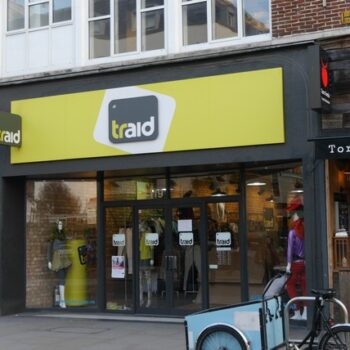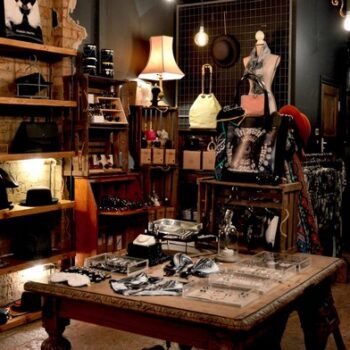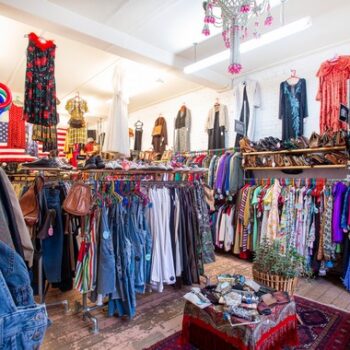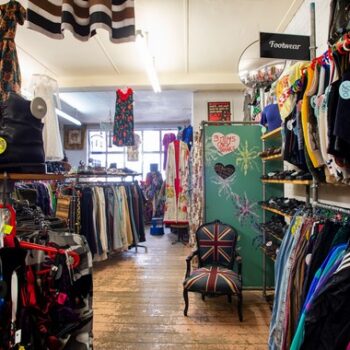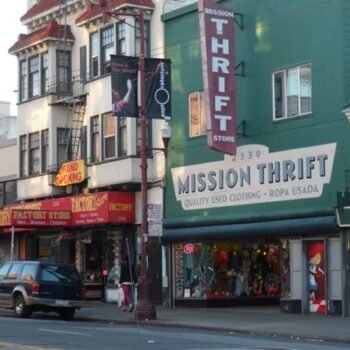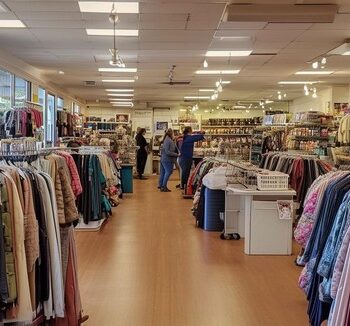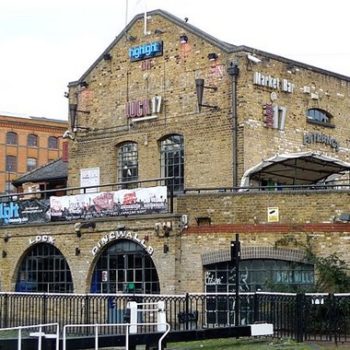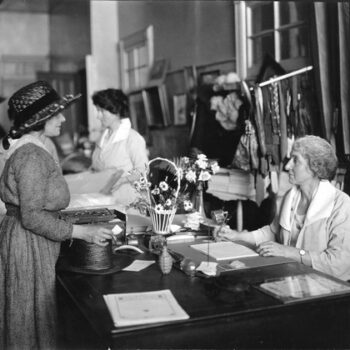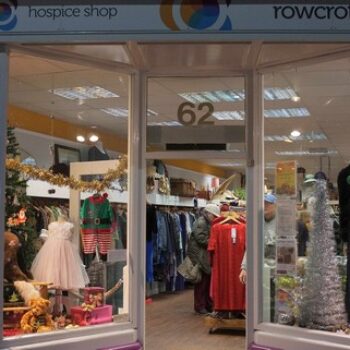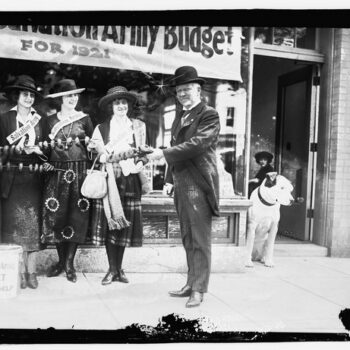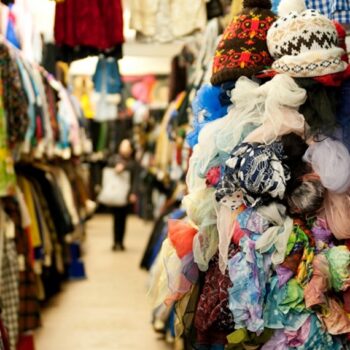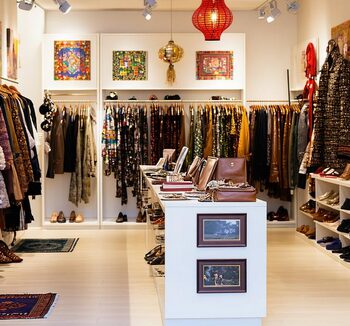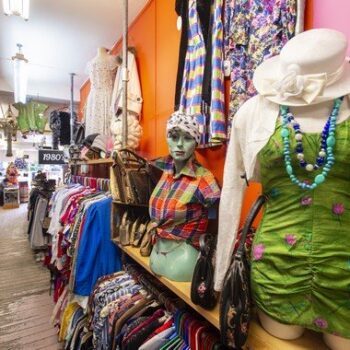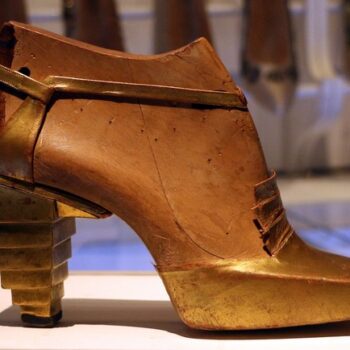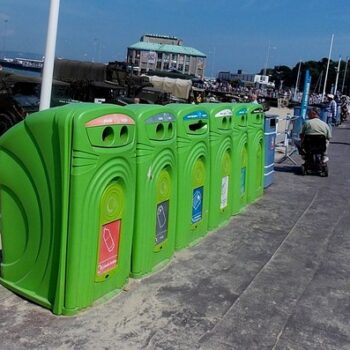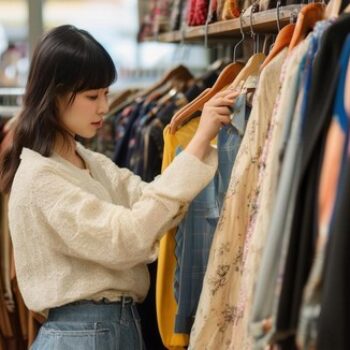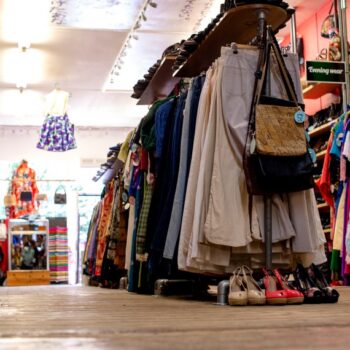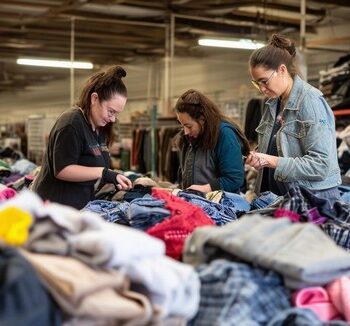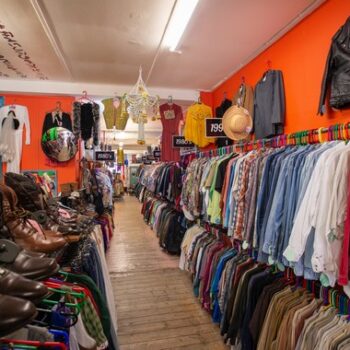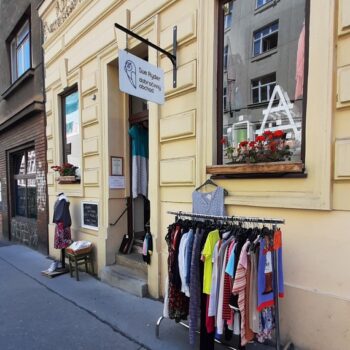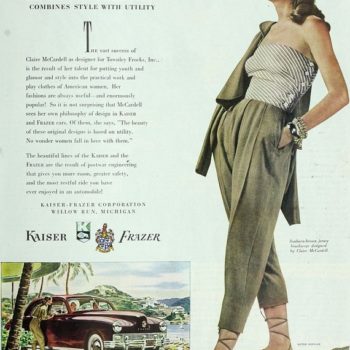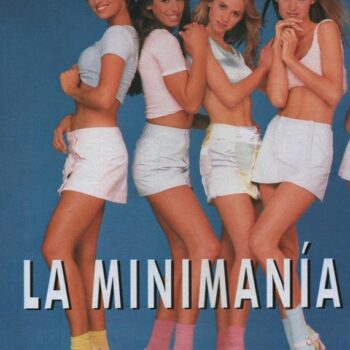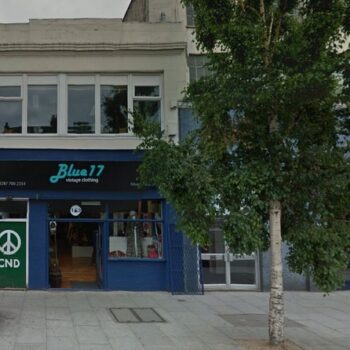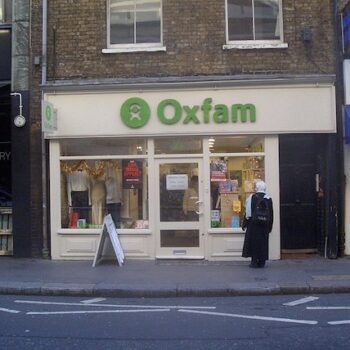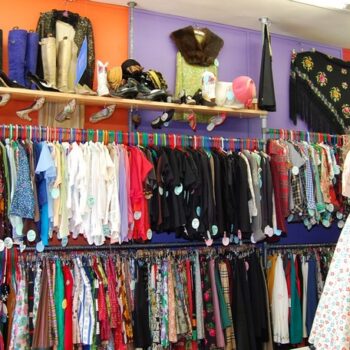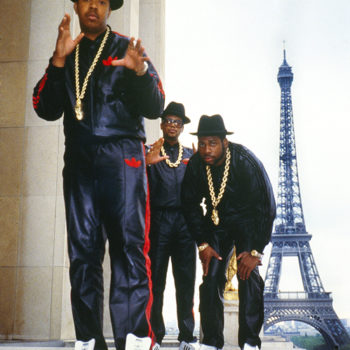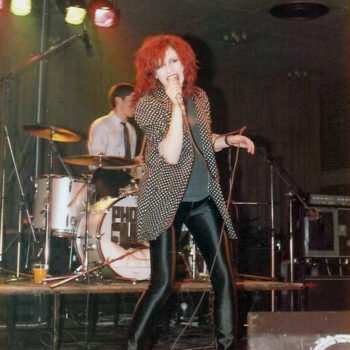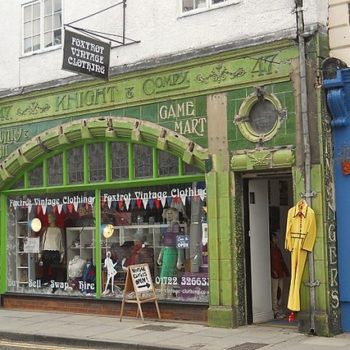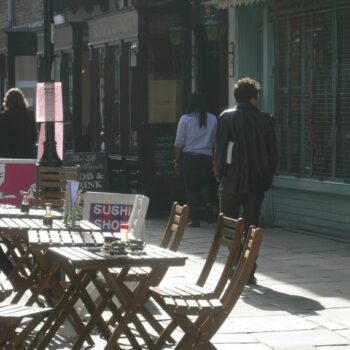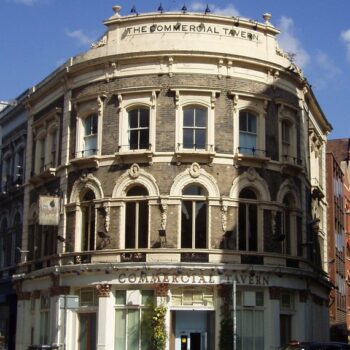Are Flea Markets The Same As Thrift Shops – We Find Out Here
June 23, 2024Flea markets and thrift shops have long held a special place in our shopping habits, offering more than just items for sale. These venues present an opportunity to find secondhand treasures, support local communities, and engage in sustainable practices. Whether you enjoy the lively atmosphere of a flea market or the organised charm of a thrift shop, each provides its own unique experience.
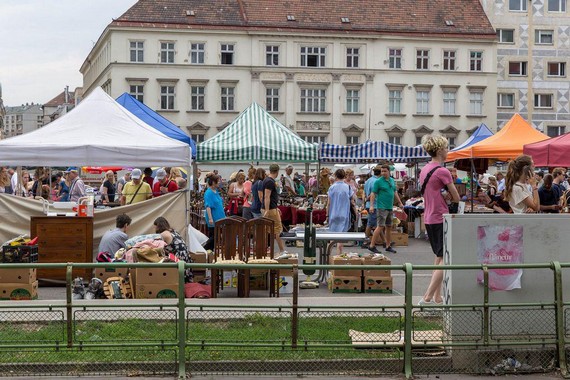
A bustling outdoor flea market scene with rows of colourful stalls, vendors displaying their wares, and shoppers browsing through the eclectic mix of items.
Definitions and Distinctions
A flea market is a bustling extravaganza, where vendors set up stalls, often outdoors, to sell a mix of secondhand goods, handmade crafts, antiques, and sometimes even fresh produce. Typically, these markets spring up periodically—weekly, monthly, or seasonally—becoming a haven for bargain hunters.
Thrift shops, on the other hand, are more static, with a brick-and-mortar presence offering donated items for resale. These donations range from clothing, accessories, furniture, books, and household items. Thrift stores often support charitable organisations, reinvesting profits into community programs or services.
Flea markets feature a variety of goods—vintage clothing, antiques, tools, handcrafted jewellery, toys, and sometimes unique food items. Vendors stock their booths with items sourced from garage sales, estate sales, auctions, and sometimes their own crafted works. Prices are usually negotiable, and haggling is part of the culture.
Thrift shops predominantly stock secondhand items but within a more curated environment. Year-round inventory includes clothing, furniture, electronics, and knick-knacks. Donations are received directly from the community, and while prices are marked and typically fixed, the thrill of finding a hidden gem can’t be overstated.
One crucial difference lies in the operational model. Flea markets often function episodically; they’re pop-up-style events providing a temporary platform for vendors to showcase their wares. In contrast, thrift stores operate daily, offering a consistent shopping experience where the merchandise constantly evolves as new donations roll in.
Vendor-curated stalls at flea markets often have a personal touch—each seller’s booth reflects their taste, creating a patchwork of styles. Thrift stores though less eclectic, provide the benefit of systematic organisation, usually sorted by category and size, making the hunt less chaotic.
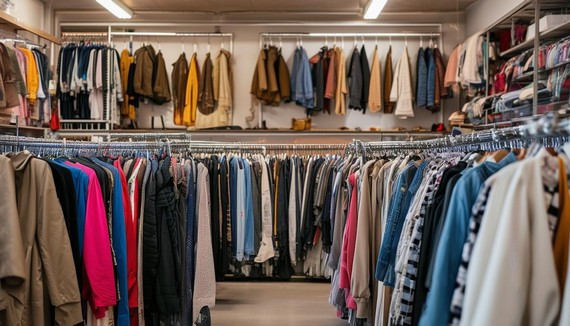
An organised clothing section inside a thrift store, with neatly arranged racks and shelves displaying a variety of secondhand clothing items.
Are Flea Markets The Same As Thrift Shops – Shopping Experience
Shopping at a flea market or yard sale is like embarking on an adventurous treasure hunt. You meander through lively aisles, each turn holding the promise of a serendipitous discovery. The air is filled with excitement and the aroma of street food wafting from nearby stalls. Vendors invite haggling as part of the experience, transforming shopping into a game of negotiation. Each sellers stall offers a window into diverse worlds—vintage vinyl records from one, handcrafted ceramics from another, and perhaps an unexpected array of macramé plant hangers at the next.
Contrastingly, thrift shopping provides a more structured yet equally rewarding experience for shopping vintage clothing and a wide range of vintage items. Walking into a thrift shop, you are greeted by neatly categorised sections—clothing here, housewares there, books in another corner. This systematic organisation can be a boon for those who appreciate a more streamlined shopping affair. The prices are usually fixed, saving you the negotiation but still offering great value. However, it’s the thrill of stumbling upon a rare vintage dress, a designer handbag, or a quirky piece of retro furniture that maintains the allure of finding vintage items.
The spontaneity of flea markets and yard sales owes much to their transient nature. They pop up like magical oases, brimming with an eclectic mix of goods that can vary drastically from one visit to the next. This unpredictability turns every flea market outing into a mini-adventure, where not just the destination, but the journey, is richly rewarding.
The reliability of thrift stores shopping provides a comforting backdrop to your shopping escapades. Knowing you can return and always encounter new stock offers a sense of continuity. These shops become familiar haunts, their evolving merchandise unfolding new stories with each visit. The layout remains mostly the same, lending an ease to your hunt, yet the hidden gems scattered throughout keep your curiosity piqued.
Flea markets and yard sales often feel like community festivals, complete with live music, bustling crowds, and the buzz of human interaction. It’s an event to be savoured, from conversing with vendors about their wares to sharing a meal from a food truck.A local Thrift store shopping offers a quieter, almost meditative space for solitary and group exploration. It’s a personal and reflective experience, allowing you to sift through the past lives of objects at your own pace.

An excited shopper at a flea market stall, holding up a unique vintage item they have just discovered.
Economic and Community Impact
Both flea markets and thrift shops hold significant positions within their local economies, often serving as lifelines for small businesses and micro-enterprises. Their roles in fostering community spirit and economic resilience cannot be overstated.
Flea markets, with their vibrant nature, act as crucial incubators for local entrepreneurs. They offer an accessible platform for small vendors, artisans, and hobbyists to showcase and sell their products without the burden of long-term rental commitments or the costs associated with traditional retail spaces. This open-market format encourages a diverse range of sellers, enriching the shopping experience and fueling the local economy by circulating wealth within the community. Through selling directly to consumers, vendors can sustain their livelihoods and even create employment opportunities, contributing to overall economic stability.
Thrift shops, though more rooted in their physical locations, play a similarly important role in the local economy. By accepting donations from the community, these stores function within the circular economy, where the emphasis is on reusing and recycling goods. Profits generated often fund community programmes, social services, or other charitable initiatives, thereby reinvesting back into local development. Moreover, the lower price points make quality goods more accessible, particularly for those on a tight budget, reinforcing the local economy’s resilience.
The community engagement fostered by both flea markets, yard sales and thrift shops is profound. Flea markets often become communal gatherings, with local musicians and street performers adding to the festive atmosphere. These events draw in crowds from various walks of life, providing a unique platform for social interaction and cultural exchange. Vendors engage directly with customers, fostering a sense of trust and loyalty.
Similarly, thrift shops provide a space for community interaction. Regular customers often form relationships with shop staff and volunteers, fostering a sense of belonging. Community notice boards and donation drives help to knit the social fabric tighter, ensuring the shop’s role extends beyond mere commercial transactions.
Both platforms also significantly contribute to the circular economy, a vital aspect in today’s increasingly sustainability-focused world. Flea markets prevent useful goods like vintage clothing and a plethora of vintage items from ending up in landfills, promoting a culture of reuse and recycling. Thrift shops operate on donations, effectively extending the lifespan of items that might have otherwise been discarded. This process fosters an environmentally friendly culture and educates the community on the importance of sustainable living.
Flea markets provide a direct support mechanism for small business owners and craftspeople. By purchasing directly from vendors, consumers ensure that their money goes straight to the source, often bolstering family-run enterprises and solo entrepreneurs. Thrift shops often have ties to larger charitable organisations, with proceeds supporting wide-ranging social programmes. These programmes might include job training, educational initiatives, or housing support, thus having a broader impact on community welfare.

A friendly vendor at a flea market stall, engaging with customers and showcasing their unique, handcrafted items.
Environmental Impact
As we dig deeper into the environmental virtues of both flea markets and thrift shops, it’s clear that each plays a pivotal role in promoting sustainability and reducing waste, contributing significantly to the circular economy.
These venues exemplify the essence of reusing and recycling, breathing new life into items that might otherwise end up in the landfill. When a shopper opts for secondhand goods, the demand for newly manufactured products decreases, resulting in less pollution, resource depletion, and waste generation associated with production processes. Flea markets, garage sales and thrift shops thus champion an eco-friendly way of shopping, where the purchase of pre-loved items curtails the need for additional raw materials and energy expenditure.
After locating and finding the thrift store, flea market or yard sale to visit, the variety of secondhand goods found on offer is staggering. Vendors often source vintage items from garage and estate sales, auctions, and even other flea markets, ensuring a continuous cycle of reuse. This system extends the life of products and diverts a significant amount of waste from landfills.
Thrift shops operate on a similar principle of sustainability. These establishments thrive on donations from the local community, encompassing items such as clothing, books, furniture, electronics, and more. By providing a consistent and reliable platform for donating and purchasing secondhand goods, thrift shops play a crucial role in maintaining a circular economy. The act of donating unwanted items instead of discarding them ensures that products remain in use for as long as possible, significantly reducing waste.
The environmental impact extends beyond merely reducing waste. By purchasing secondhand items, consumers indirectly reduce the demand for fast fashion and mass-produced goods, both notorious for their negative environmental footprints. Fast fashion, in particular, generates enormous amounts of textile waste and consumes vast resources, including water and energy.1 In contrast, when shoppers buy from flea markets or local thrift stores, they help mitigate the adverse effects of fast fashion by promoting more sustainable consumption habits.
In addition to reducing waste, both flea markets and thrift stores contribute to a smaller carbon footprint. The production and transportation of new goods involve substantial carbon emissions. Opting for pre-owned items eliminates the emissions associated with manufacturing and shipping new products, thereby reducing overall carbon impact.
The concept of the circular economy is at the heart of the environmental impact of these markets. By keeping products in use for longer, both flea markets and local thrift stores help create a more sustainable, resource-efficient system. The items bought and sold at these venues are part of a broader ecosystem of reuse, where materials are continually cycled, minimising waste and maximising utility. Each purchase is a step towards a more sustainable and responsible consumption model.
Both environments foster awareness about sustainable living. Shoppers learn the value of reusing and repurposing items, fostering a culture that prioritises environmental responsibility. This awareness can inspire broader changes in consumption patterns, encouraging individuals to make more environmentally-friendly choices in their everyday lives.
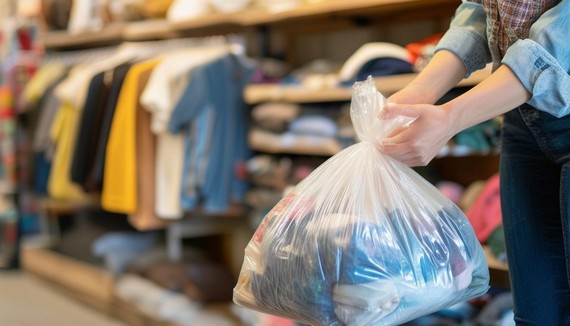
A person donating a bag of clothing to a thrift store, highlighting the sustainable practice of giving unwanted items a second life and reducing textile waste.
Are Flea Markets The Same As Thrift Shops – Popularity and Trends
Sustainability has emerged as a key driver behind the increasing popularity of flea markets, garage sales and thrift shops among younger generations. Younger consumers, more informed about environmental issues, are actively looking for ways to reduce their carbon footprint and support a circular economy. Flea markets and thrift shops offer secondhand goods that keep resources in use and reduce the demand for new production. The appeal of sustainable fashion and vintage clothing, where each purchase promotes reducing waste and recycling, resonates with eco-conscious shoppers aware of the negative impact of fast fashion.
Affordability is another critical factor. The budget-friendly nature of thrift shops and flea markets is highly attractive to young people facing economic challenges. These venues offer quality items at a fraction of the cost of new goods, allowing shoppers to stretch their pounds further. In cities with high living costs, the ability to acquire stylish, functional items without breaking the bank is particularly appealing.
The search for unique finds also drives the appeal. In a world of mass-produced items, the individuality offered by flea markets and thrift shops or vintage items is refreshing. Young shoppers often seek to define their personal style with items that carry a sense of history and uniqueness. Discovering a one-of-a-kind jacket, a rare vinyl record, or an antique lamp infuses a sense of nostalgia and character into their possessions.
The overall shopping experience plays a substantial role in the growing popularity of these venues. Flea markets, with their lively atmosphere, turn shopping into an event. The mingling of diverse people, banter with vendors, street food, and impromptu performances create a vibrant, community-centric experience that is both entertaining and enriching.
Thrift shops offer a different but equally compelling experience. The organised layout makes it a haven for the methodical treasure hunter. Sifting through racks to unearth hidden gems, the satisfaction of bagging a bargain, and the quieter nature of these spaces provide a chance to slow down, reflect, and engage in mindful consumption.
The cultural shift towards valuing sustainability, affordability, distinctive vintage items, and rich, engaging experiences has ensured the burgeoning popularity of flea markets, garage sales and thrift shops among younger generations. As they continue to embrace these values and seek out these unique shopping adventures, the trend shows no signs of waning, promising a future where sustainable and savvy consumption thrives.1

A group of young people enjoying a thrift shopping experience together, browsing through racks of unique clothing items and vintage accessories.
Both flea markets and thrift shops play vital roles in promoting sustainability and supporting local economies. By choosing to shop at these venues, you contribute to:
- Reducing waste
- Enjoying the thrill of discovering hidden gems
- Supporting local businesses and communities
It’s a win-win situation that benefits shoppers and communities alike.
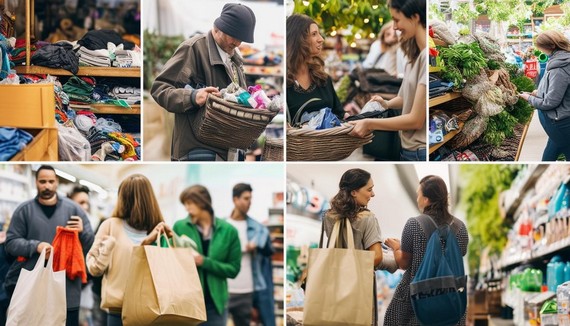
A visually engaging collage featuring images of people making eco-friendly shopping choices, such as buying secondhand items, donating unwanted goods, and carrying reusable shopping bags.







